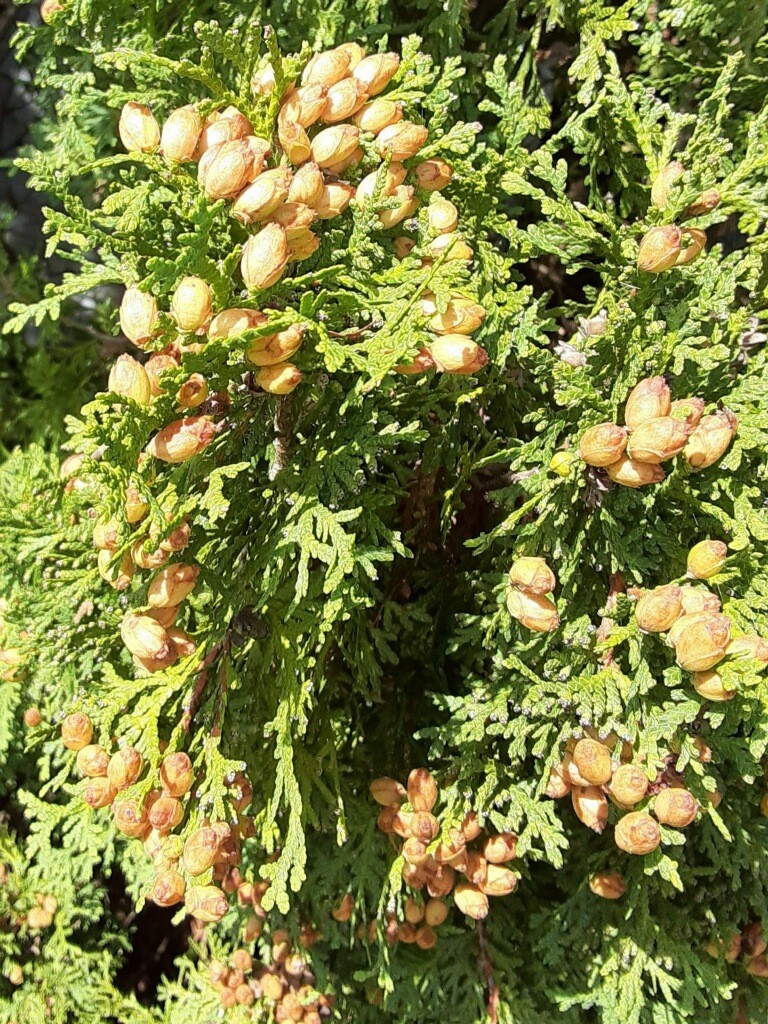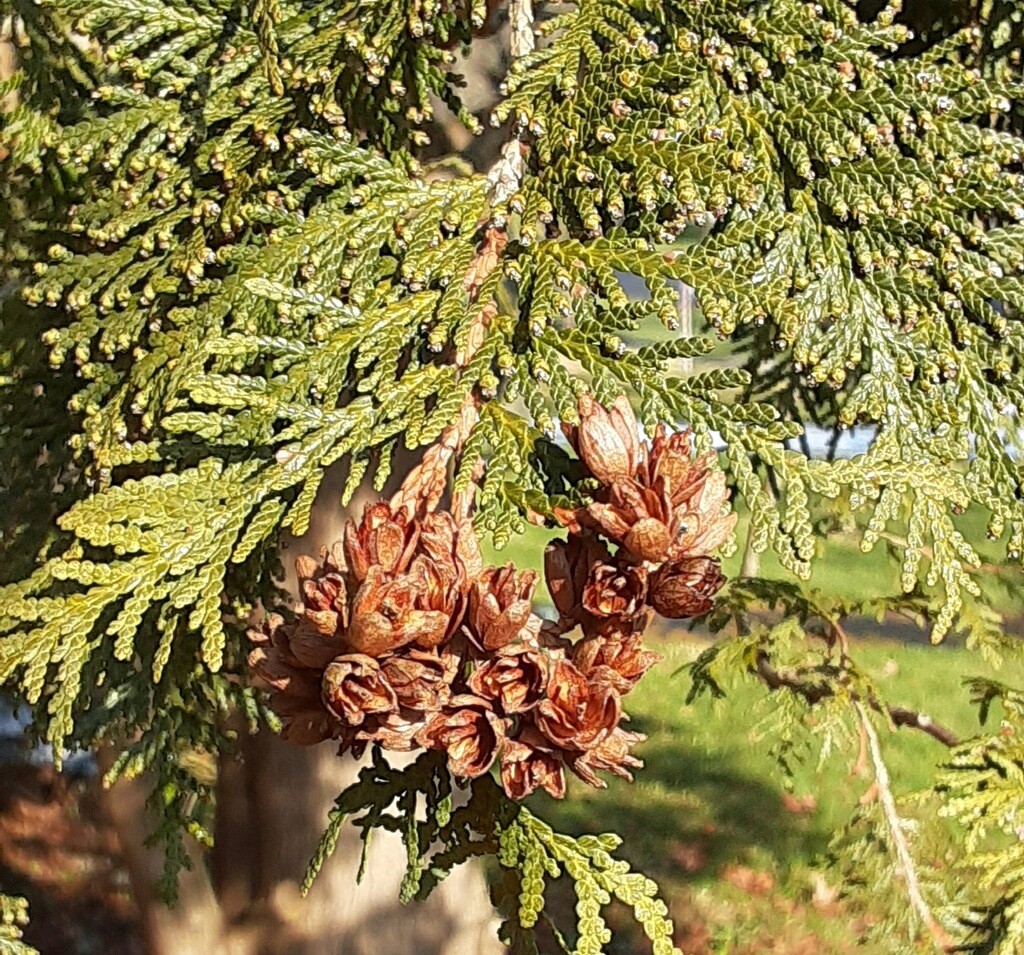By Susan Sprout
You have probably seen a lot of evergreen trees called Arborvitae. It is a name used in the horticulture trade for the more than three hundred cultivars of Thuja occidentalis being sold for wind screens, privacy hedges, ornamentals and such. Did you know that the original, non-genetically modified, non-cross-bred Thuja occidentalis is native to North America, growing wild from the Arctic treeline to the southern Appalacian Mountains of Tennessee? Cool! (They DO actually grow better in places with cooler summers.)There are no known original stands of them in Pennsylvania, and are considered extirpated, which occurred, perhaps, during the lumber boom. There are many different re-imaginings of them growing here now, where people have planted all sorts of varieties – by their houses, in cemeteries and parks. Enough that some have become naturalized.

Arborvitae is not a true cedar, but a member of the Cypress Family, CUPRESSACEAE, that contains junipers, bald cypress, northern and Atlantic white cedars. Arborvitae’s scale-like leaves are flat against the fan-like, horizontal branches on which they grow. The tree’s trunk and large branches are light, reddish-brown with easily shredded bark. They are naturally adapted to wet forests, but grow on upland alkaline limestone soils as well. Often stunted in less favorable locations, this tree can slowly grow up to sixty feet tall and live for fifty to one hundred fifty years. One of the oldest trees in Eastern North America is an Arborvitae that is alive and well and living in Southern Ontario at the ripe old age of 1,316! They have the amazing ability to keep growing when parts of them have been killed or damaged. It also helps when they live on cliffs away from deer who strip their green branches for winter browse.

In 1588, this tree received the common name “arbre de vie” or Arborvitae – “Tree of Life” – because it was so helpful in preventing and treating Scorbut (scurvy), the winter illness from which many French sailors and explorers in the New World died. We know today that the leaf and bark teas made from the green Arborvitae twigs hold healing amounts of vitamin C and several essential amino acids. Externally, the leaf oil distilled from twigs is antibacterial and antiviral. Research and experimentation are on-going. The lightweight wood of Arborvitae splits easily and is used for poles, shingles, cross-ties and posts. It is very rot resistant. This fact maybe another reason for the longer lives of The Trees of Life.

